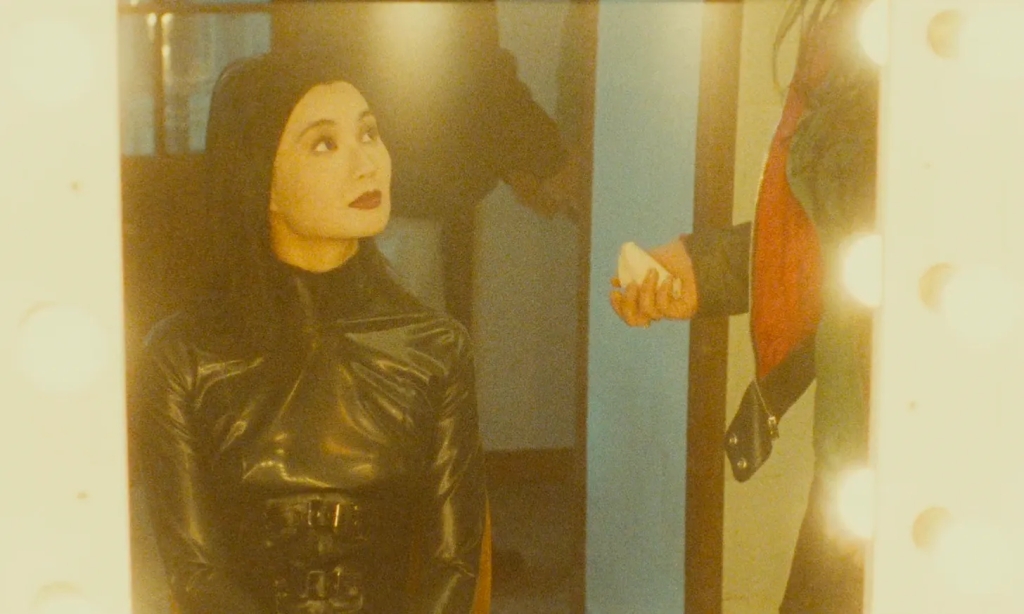I’ve been a little bored lately, circling the complex where I live like a prisoner of my own making. Except ‘my own’ is a little heavy handed a remark; it is a collective kind of incarceration that besieges us in an array of consequences. Even with restrictions loosening in public life, I find myself staying with the same boxed-in routines, that seem more airy than they were months ago. I looked out the window the other day and saw that the fence that separates our homes from the train tracks had been vandalized. It was cleaned, by whatever means possible, and then graffitied again. I keep looking to see if the cycle repeats.
Two films recently woke me from what feels like a long slumber: Olivier Assayas’s Irma Vep, and Michael Haneke’s The Piano Teacher. In both cases, viewer discretion is advised – which is the least of their appeal.
Both films are, visually speaking, about looking: what happens when you examine the contours of someone’s face — looking at what they are looking at — closely. In the opening scene of Irma Vep, Maggie Cheung walks into a French film production company’s offices without a common language, looking around as we do for a clue. A clue is not what we get in this film, which is nevertheless about creation, re-creation, and reflexivity. Maggie is cast as a version of herself – an actress from Hong Kong who is to be the star of a remake of the silent 1915 French film, Les Vampires. A French film within a French film, in which intellectualism is almost parodied. In the end, however, an argument seems to be made for its necessity, or at least its fruitfulness.

To focus on what the film means is to overlook what it makes us see; its limns of the banalities of filmmaking that produce great scenes. Maggie’s task, according to the film’s off-kilter director, René, is to “be herself,” something that is hardly possible in a black latex, skin-tight costume and powdered face. Her performance throughout, as herself, are strong: she is self-conscious, exchanging pleasantries and controlling the level of intimacy she feels with characters, a girl at a party who isn’t in on the joke, or able to speak the language. Others fawn over her. It may as well be a movie about stardom, a movie about stars that don’t align.
In The Piano Teacher, the person with the most power is scrutinized from the position of someone who doesn’t sit in the glare of their scrutiny. You wish you knew how to play piano so you could be grateful for the fact you were not playing. The camera is smart: it looks at you, looking at the characters, looking at each other. Isabelle Hupert’s character, Erika Kohut, is cold and calculating as she is sympathetic. We see her peer at female skaters being forced off the ice by a group of male hockey players. Her lower lip trembles and we let down our guard. But the film as a whole is one where you would prefer to look away.

In the last scene, one of the most powerful cinematic moments I hold in my memory, there is a break in understanding. We lunge after Erika’s feelings in this moment of resonance and dissonance. Why is this emotion—whatever version of it makes her human in our eyes—off limits to us in a way that refurbishes our interest in her motivations? Or is it not a matter of choice? A violent act toward oneself draws sympathy in a way that we cannot fully comprehend, but we go with it, and her, into the dark contours of the city. The doors are there, they swing open. She leaves.

Leave a comment